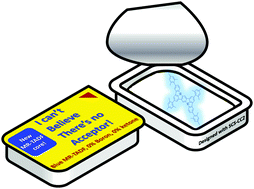Diindolocarbazole – achieving multiresonant thermally activated delayed fluorescence without the need for acceptor units†‡
Abstract
In this work we present a new multi-resonance thermally activated delayed fluorescence (MR-TADF) emitter paradigm, demonstrating that the structure need not require the presence of acceptor atoms. Based on an in silico design, the compound DiICzMes4 possesses a red-shifted emission, enhanced photoluminescence quantum yield, and smaller singlet-triplet energy gap, ΔEST, than the parent indolocarbazole that induces MR-TADF properties. Coupled cluster calculations accurately predict the magnitude of the ΔEST when the optimized singlet and triplet geometries are used. Slow yet optically detectable reverse intersystem crossing contributes to low efficiency in organic light-emitting diodes using DiICzMes4 as the emitter. However, when used as a terminal emitter in combination with a TADF assistant dopant within a hyperfluorescence device architecture, maximum external quantum efficiencies of up to 16.5% were achieved at CIE (0.15, 0.11). This represents one of the bluest hyperfluorescent devices reported to date. Simultaneously, recognising that MR-TADF emitters do not require acceptor atoms reveals an unexplored frontier in materials design, where yet greater performance may yet be discovered.

- This article is part of the themed collection: Materials Horizons 2022 Most Popular Articles


 Please wait while we load your content...
Please wait while we load your content...